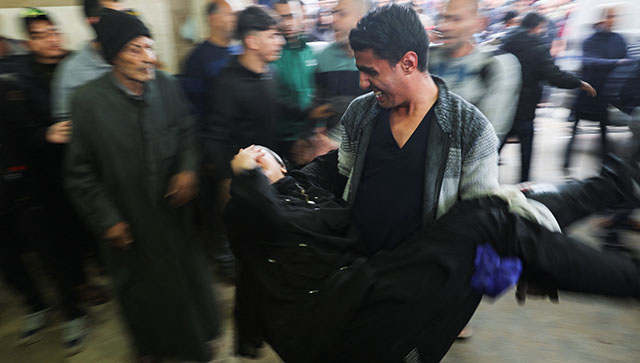The fragile truce in Gaza has been shattered as Israel resumes its strikes, targeting over 200 sites with no safe zone, including southern Gaza. The recent attack on Khan Younis, a city in the southern part of the Gaza Strip, highlights the intensification of the conflict.
Israel’s mission and the tunnel threat The primary focus of Israel’s current offensive is the extensive network of tunnels constructed by Hamas. The Israel Defence Forces (IDF) claim to have discovered over 800 shafts with around 500 already destroyed. Israel alleges that these tunnels are strategically placed in sensitive areas such as schools, mosques and playgrounds releasing footage to support these claims. Benjamin Netanyahu’s objectives Prime Minister Benjamin Netanyahu emphasises two key objectives: protecting civilians in Gaza and eliminating Hamas for what he terms a “complete victory.” “In order to complete the sacred mission of returning all our hostages, to eliminate Hamas and to ensure that Gaza does not return to pose a threat to Israel, that it does not contain an entity that educates its children for terrorism, that supports terrorism, that finances terrorism, that calls for the destruction of Israel, we continue to fight with all our might,” said Prime Minister Netanyahu. However, achieving both goals proves challenging as civilian casualties continue to rise. The death toll surpasses 15,000 including 6,600 children with over 41,000 wounded and 6,800 missing. Strategic challenges and international concerns The conflict’s strategic downside becomes apparent as the invasion risks turning more Gazans into hardliners. French President Emmanuel Macron raises concerns suggesting that the destruction of Hamas could take a decade and questioning the feasibility of such an objective. “What is the total destruction of Hamas and does anyone think it’s possible? If it is, the war will last 10 years. And I don’t think anyone can seriously define this objective, so this objective must be clarified,” said President Macron. The conflict in Gaza has broader regional implications, evident in attacks on commercial ships in the Red Sea. Houthi rebels, backed by Iran and allied with Hamas, claimed responsibility for these attacks. With the Houthi declaration of war on Israel and promises of more attacks until the conflict ends, the region faces heightened instability. The Red Sea, a critical trade route with around 10 per cent of global trade passing through, is now at risk. Attacks on commercial ships not only impact trade but also pose a security threat. The US warship’s interception of Houthi drones raises questions about potential retaliation and the involvement of other regional players. Hezbollah has resumed attacks on Israel striking positions along the border. Israel responded resulting in at least one Hezbollah fighter’s death. The situation begs the question of how long before the US or Iran takes a more direct and forceful stance. As Israel intensifies its offensive, there is a growing concern that the international community is losing interest. The hope remains that Israel’s allies, including leaders like Joe Biden, Olaf Scholz and Rishi Sunak, will exert pressure to bring about a ceasefire and prevent further escalation. The situation in Gaza is rapidly escalating with Israel pursuing its objectives amid international concerns and regional risks. The impact on trade, security and the potential for a broader conflict underscore the urgency for diplomatic intervention and a renewed commitment to finding a lasting solution. Views expressed in the above piece are personal and solely that of the author. They do not necessarily reflect Firstpost’s views. Read all the Latest News , Trending News , Cricket News , Bollywood News , India News and Entertainment News here. Follow us on Facebook, Twitter and Instagram.


)

)
)
)
)
)
)
)
)



